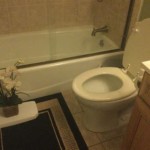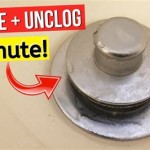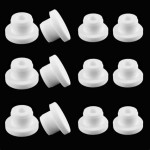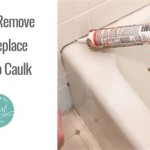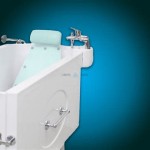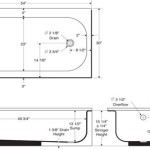The 54 Inch Alcove Bathtub with Right Drain: A Comprehensive Guide
The 54-inch alcove bathtub with a right drain is a popular choice for homeowners looking to remodel or upgrade their bathrooms. This configuration offers a balance of space efficiency and bathing comfort, making it suitable for a variety of bathroom sizes and layouts. Understanding the specifications, benefits, considerations, and installation process associated with this type of bathtub is crucial for making an informed purchasing decision.
An alcove bathtub, by definition, is designed to be installed within a three-walled recess, often utilizing the existing wall structure to create a contained bathing space. The “54 inch” dimension typically refers to the length of the bathtub, while the "right drain" designation indicates the location of the drain outlet when facing the tub's apron. This placement can greatly influence plumbing requirements and bathroom layout planning.
The standard width of these tubs is generally around 30 inches, and the overall height, including the integral apron, usually falls between 14 and 16 inches. However, these dimensions can vary slightly depending on the manufacturer and specific model. Careful measurement of the intended installation space is essential before purchasing any bathtub.
Key Point 1: Advantages of a 54 Inch Alcove Bathtub
Several advantages contribute to the popularity of the 54-inch alcove bathtub with a right drain. These benefits range from space optimization to ease of installation and overall cost-effectiveness.
First, its relatively compact size makes it a suitable option for smaller bathrooms where space is at a premium. Unlike larger freestanding or drop-in bathtubs, the alcove design maximizes the usable floor area. This is particularly beneficial in older homes or apartments where bathroom dimensions are often restricted.
The alcove configuration also simplifies the installation process. By utilizing existing walls, the framework and enclosure construction are minimized. This reduced complexity translates to lower installation costs and a faster completion time compared to more elaborate bathtub setups.
Furthermore, alcove bathtubs are generally more affordable than other bathtub types. This cost-effectiveness stems from their simpler design and standardized manufacturing processes. Homeowners on a budget can achieve a functional and aesthetically pleasing bathing solution without exceeding their financial limitations.
The right drain placement, in particular, can be advantageous depending on the existing plumbing infrastructure. Aligning the new bathtub's drain with the existing plumbing lines can minimize the need for extensive pipe relocation, further reducing installation costs and complexity. However, the suitability of the right drain configuration depends entirely on the specific bathroom layout and plumbing configuration.
Alcove bathtubs also offer a degree of versatility in terms of material choices. They are commonly available in acrylic, fiberglass, and cast iron, each with its own set of advantages and disadvantages. Acrylic bathtubs are lightweight, durable, and offer good heat retention. Fiberglass bathtubs are even more affordable but may be less durable than acrylic. Cast iron bathtubs are extremely durable and offer excellent heat retention but are significantly heavier and more expensive.
Key Point 2: Material Considerations and Durability
The material composition of a 54-inch alcove bathtub significantly impacts its durability, heat retention, cleaning requirements, and overall lifespan. Selecting the appropriate material is crucial for ensuring long-term satisfaction and minimizing maintenance.
Acrylic bathtubs are manufactured from sheets of acrylic that are vacuum-formed and reinforced with fiberglass. This construction results in a lightweight yet durable bathtub that is resistant to scratches and stains. Acrylic also provides good heat retention, keeping the bathwater warmer for longer periods. Cleaning acrylic bathtubs is relatively simple, requiring only mild soap and water. Abrasive cleaners should be avoided, as they can damage the surface.
Fiberglass bathtubs are made from layers of fiberglass reinforced with resin. While more affordable than acrylic, fiberglass is generally less durable and more prone to scratches and chips. Heat retention is also poorer compared to acrylic. Cleaning fiberglass bathtubs requires more caution, as the surface can be easily scratched by abrasive cleaners. Regular waxing can help protect the fiberglass surface and maintain its shine.
Cast iron bathtubs are made from molten iron that is poured into a mold and coated with a layer of porcelain enamel. This construction results in an extremely durable and heavy bathtub that offers excellent heat retention. Cast iron bathtubs are resistant to scratches, stains, and chipping, making them a long-lasting investment. However, they are significantly more expensive and require professional installation due to their weight. Cleaning cast iron bathtubs requires mild soap and water, and abrasive cleaners should be avoided to protect the porcelain enamel coating.
Beyond the primary material, the finish of the bathtub also plays a role in its durability and appearance. A high-gloss finish can enhance the aesthetic appeal but may be more susceptible to scratches and water spots. A matte finish can be more forgiving in terms of concealing imperfections but may require more frequent cleaning to prevent soap scum buildup. The choice of finish ultimately depends on personal preference and the desired level of maintenance.
Warranty coverage is another important factor to consider when evaluating the durability of a 54-inch alcove bathtub. Reputable manufacturers typically offer warranties that cover defects in materials and workmanship for a specified period. Reviewing the warranty terms carefully can provide valuable insights into the manufacturer's confidence in the product's quality and longevity.
Key Point 3: Installation and Plumbing Considerations
The installation of a 54-inch alcove bathtub with a right drain involves several key steps, including preparing the alcove, connecting the plumbing, and securing the bathtub in place. Proper installation is crucial for ensuring the bathtub's stability, water tightness, and longevity.
Before installing the bathtub, the alcove must be properly prepared. This typically involves ensuring that the walls are plumb and the floor is level. Any existing plumbing fixtures, such as the old bathtub or shower, must be removed. The subfloor may need to be reinforced to support the weight of the new bathtub, especially if it is a cast iron model.
Connecting the plumbing is a critical step in the installation process. The drain assembly must be properly installed and sealed to prevent leaks. The overflow drain, which prevents the bathtub from overflowing, must also be connected to the drain line. If the existing plumbing lines do not align with the new bathtub's drain location, some pipe relocation may be necessary. This is where the "right drain" configuration can prove advantageous, minimizing the extent of plumbing modifications.
Once the plumbing is connected, the bathtub can be carefully positioned within the alcove. Shims may be needed to ensure that the bathtub is level and properly supported. The bathtub should be secured to the wall studs using screws or adhesive, according to the manufacturer's instructions. Applying a bead of caulk along the perimeter of the bathtub where it meets the walls will create a watertight seal and prevent water damage.
The type of drain assembly is another important consideration. Pop-up drains are a common choice, offering a convenient and easy-to-use mechanism for opening and closing the drain. Toe-tap drains are another option, activated by pressing on the drain cover with your toe. Choosing the right drain assembly depends on personal preference and ease of use.
Finally, it's important to comply with all local plumbing codes and building regulations during the installation process. These codes may specify requirements for drain size, pipe materials, and venting. Failure to comply with these regulations can result in fines or require costly rework. In many cases, it is advisable to hire a qualified plumber to handle the installation, especially if any plumbing modifications are required.
In conclusion, a 54-inch alcove bathtub with a right drain offers a practical and cost-effective bathing solution for many homeowners. Careful consideration of its advantages, material options, and installation requirements is essential for making an informed decision and ensuring long-term satisfaction with the product.

Hydro Systems Ton 54 In X 36 Right Drain Rectangular Alcove Bathtub White Tnt5436atow The Home Depot

Swiss Madison Voltaire 54 In X 30 Acrylic Right Drain Rectangular Alcove Bathtub White Sm Ab563 The Home Depot

Fine Fixtures 54 In X 30 Acrylic Right Drain Rectangular Apron Front Non Whirlpool Bathtub White Bta107 R The Home Depot

Bootz Industries Kona 54 In X 30 Soaking Bathtub With Right Drain White 011 3302 00 The Home Depot

Swiss Madison Voltaire 54 In X 30 Acrylic Right Drain Rectangular Alcove Bathtub White Sm Ab563 The Home Depot

Kingston Brass Aqua Eden Vtap543023r 54 Inch Acrylic 3 Wall Alcove Tub With Arm Rest

Fine Fixtures 54 In X 30 Acrylic Right Drain Rectangular Apron Front Non Whirlpool Bathtub White Bta107 R The Home Depot

Woodbridge 54 In X 30 Acrylic Soaking Alcove Rectangular Bathtub With Right Drain And Overflow White Chrome Hbt7124 The Home Depot

Kingston Brass Aqua Eden Vtap543023r 54 Inch Acrylic 3 Wall Alcove Tub With Arm Rest

Mansfield 30 In X 54 White Porcelain Enameled Steel Alcove Soaking Bathtub Right Drain The Bathtubs Department At Com
Related Posts

